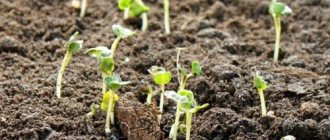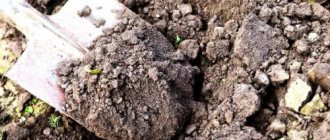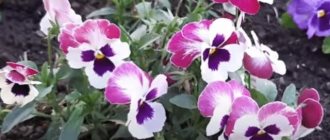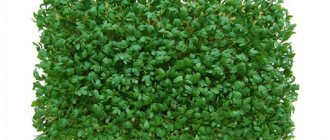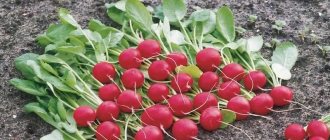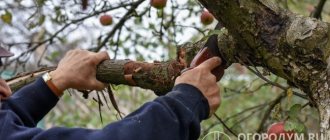Planting fruit and berry bushes always depends on the goals, climatic conditions in the region and the age of the plant. For currants, planting is carried out in autumn or spring.
The autumn method is considered the golden mean among gardeners. This allows the bush to adapt to the soil and prepare for wintering. In autumn, the risk of pest infection is significantly reduced, and the plant takes root more quickly. Planting currants before wintering is suitable for both southern and northern regions, while spring planting may result in frozen roots in cold areas. From the article you will learn how to properly plant a currant bush in the fall, the basic technologies of this process.
Autumn timing for planting a currant bush to give a good harvest
There are no exact dates for planting currant seedlings in the autumn. First of all, you need to focus on the climate in the region and the specifics of a particular season. In the northern regions of Russia with early frosts (Ural, Siberia and Murmansk region), currants should be planted from the second half of August. In the south of the country, planting can be postponed until the first ten days of October.
For the middle zone, the second half of September is considered the optimal planting time.
Currant rooting occurs within 15-25 days, depending on the type and variety. It is recommended to plan planting approximately 3 weeks before the first frost.
Selecting a location
This culture loves to grow in moist, nutritious soils. But the landing location also directly depends on the region. In the context of global warming, the climate has begun to change dramatically, which brings its own characteristics to agriculture.
For example, not so long ago in the southern regions, gardeners calmly grew currants in the open sun, but now, in such conditions, the crop simply burns, yielding virtually no harvest. Therefore, when choosing a place for planting in regions where it is very hot in summer, you need to take into account the weather factor.
Many gardeners in these areas place a shade net over the bushes after planting, which effectively protects the plants from the scorching sun. It is advisable to plant currants in the shade of trees, taking into account the compatibility of these plants. For example, black currant feels great under an apple tree. Often gardeners plant it along the fence, providing the plant with shade for half a day.
The situation is different in more northern regions. Here, on the contrary, it is advisable to provide the plant with more sun, since in strong shade and cool weather the berries may not absorb enough sugar. The site must be protected from strong winds; it can be either flat or gently sloping. The place where planting is planned should not be swampy, and groundwater should not come close to the surface.
Red currants can be planted in sunny areas; they tolerate intense solar radiation and drought better than black ones. In addition, before planting, you need to check the composition of the soil. Saline, waterlogged, too acidic or gravelly soils are not suitable.
Seedling
Not only the future productivity of the currant bush, but also its health, speed and development depend on the quality of planting material. Seedlings can be purchased at a nursery or prepared yourself; both methods have their advantages and disadvantages. Signs of good currant planting material:
- It is advisable to choose only two-year-old seedlings, so that the harvest can be obtained the next season;
- the root must have at least three branches;
- there are from 3 trunk buds of growth or shoot;
- The fibrous system is developed, there are no deformations or damage, small roots are formed in the form of a bundle.
When choosing, you should pay attention to the condition of the bark. It should be uniform in color, without visible cracks or signs of rotting.
How to choose a purchased one
You need to purchase black and red currant seedlings only in specialized stores or nurseries. This will protect you from purchasing low-quality planting material of an unknown variety and type. You should buy two-year-old cuttings of Gross currant and other varieties that acclimatize faster and produce new shoots. The root system must be developed by at least 15 cm; if this part is covered with film or cardboard, it must be removed. The roots should be slightly damp and treated.
Pay attention to the branches. It is advisable to choose a seedling with smooth and flexible shoots up to 40 cm long. They should have 3 or more buds without pronounced swelling. The bark along the entire length of a healthy plant is brown without any dents or deformations.
If you slightly cut the top layer of bark, you will notice a smooth lower layer of green color. It should smell pleasantly like fresh currants.
How to prepare yourself
If you decide to prepare cuttings yourself, then you need to start harvesting them 1-2 weeks after harvesting.
The main (basal) shoots or annual branches coming from the main bush are suitable for this purpose. The length of the cutting should be from 15 to 20 cm, width - from 7 mm. You only need to cut the shoots with a sharp knife or pruning shears, 1.5-2 cm above the bud, since it is in the internodes that roots form. Cuttings prepared independently should be immersed in water with a growth stimulator for 1 week. Its temperature should be 18-20°C, and the water should be changed at least twice during the entire rooting period. However, some gardeners prefer to use moistened sawdust or moss; when choosing this technology, a growth stimulator is not used. This material will tell you about the characteristics of the Malbec grape variety.
Soil preparation
Before planting, you need to plan and clean the area. They rake up all the debris, fill up all the holes and level out any uneven areas.
To increase soil fertility, rotted manure is scattered over its surface in a layer of up to 5 cm. It is advisable to use cow manure, but you can use sheep or chicken manure; they will be more concentrated and have a high nitrogen content.
This factor must be taken into account, otherwise you can burn the roots. After the humus is scattered over the area, the soil is dug up using a shovel or plowed using a walk-behind tractor or mini-tractor. Afterwards, planting holes are prepared, approximately 50x50 cm in size, up to 40 cm deep. Approximately a bucket of fertile soil, peat, compost or the same humus is poured into each of them. Granulated mineral fertilizers are also added:
- Superphosphate (150-200 g);
- Nitroamaphoska (20-30 g, about a tablespoon);
- Potassium chloride – (20-25 g).
When planting in early autumn, when the soil is still quite warm, it is important to treat the seedlings with preparations to protect them from soil pests. To do this, plants in pots are shed with a solution of insecticides Aktara, Nurell D, Antikhrushch, Konfidor. For dug seedlings, soak the root system in the same solution overnight.
I thoroughly mix all the ingredients (peat, humus, fertilizers) with garden soil. Before planting seedlings with ACS, they are inspected, cutting off all dried, broken or rotten roots to healthy tissue. Many experienced gardeners soak the root system overnight in a solution of a fungicide and growth stimulator, for example, they take the drugs Fundazol and Radifarm.
This allows you to avoid the development of various diseases, speeds up the establishment of bushes in a new place and contributes to a better wintering. After planting, the remaining solution is watered at the roots of the bushes. When choosing plants with ZKS, pour a similar solution onto the soil in containers or pots and let them stand for a while. Then a small earthen mound is poured at the bottom of the planting hole, on which the roots of the seedling are straightened, and then it is covered with soil, compacting it lightly.
It is important to plant currants at an angle, the angle should be about 45 degrees. It is also necessary to deepen the plant 8-10 cm into the soil. Such agricultural practices contribute to the active growth of new shoots and the development of a powerful root system. Then all branches are cut off, leaving only 2-3 buds above the ground. Pruning will stimulate the regrowth of numerous young shoots in the spring.
After planting, it is advisable to mulch the root zone with mown grass, straw, green manure (green manure), or just weeds without seeds. The layer should be at least 10 cm. Mulch will help the root system to better survive winter frosts. Mulch, gradually rotting, improves the structure of the soil. Humus or peat can be used as mulching material.
Then the planted bushes are shed generously with water (about a bucket per plant). If the weather is dry and not rainy, you need to ensure that the soil is regularly moistened as it dries out. After 10 days, you can fertilize the roots with complex mineral fertilizer.
Immediately before frost, the bushes are hilled, raising the soil to a height of 15 cm. It is important in the spring, with the onset of stable warm days, to rake away all the mulch from the root zone of the plant, allowing the sun's rays to begin to warm the soil. If this is not done, then the currant may lag behind in development.
How to choose the right landing site
Currants prefer well-lit areas located on a gentle slope or small hill. Some varieties tolerate darkening well, so the shrub can be placed under the crown of a large tree. Currants can be planted next to a fence or other structure, but the distance from it should be at least 1 m. When planting next to other large plants, it is advisable to maintain an interval of 2 m in order to create optimal conditions for the development of roots, as well as for the convenience of subsequent construction of supports for the bush.
It is undesirable to plant currants in close proximity to any type of body of water, which leads to constant wetting of the roots and their rotting.
Good soil
All types of currants are recommended to be planted in areas where the soil has a slightly acidic or neutral acidity level.
If the substrate is acidic, then during planting 100-150 grams should be added to the planting hole. ground limestone or chalk. Fertile black soil is best suited for this crop, but loamy areas can also be chosen. The soil must retain moisture and have good aeration to avoid root diseases. Read about the Pinot Noir grape variety here.
What can't you sit next to?
It is not recommended to plant currants in the place where gooseberries or other types of currants previously grew. They release a toxin that is dangerous to the crop into the soil, reducing yield and growth rates. It is undesirable to plant shrubs in an area where moss or horsetail grows, which are a signal of increased soil acidity.
If you are planning to create a fruit and berry zone on your plot, then you need to carefully select crops. It should be remembered that black and red currants do not get along well with each other, and also react poorly to proximity with sea buckthorn, cherries, raspberries and blackberries.
You should not plant currant bushes next to Jerusalem artichoke or horseradish, which tend to grow very quickly, occupying the entire free area of the site.
What can you plant with?
There are a large number of cultivated plants that have a positive effect on the growth and yield of currants. Honeysuckle and homemade hops are considered the best neighbors in the area. You can also place a plum in close proximity to currants. And onions and garlic, planted nearby, can reduce the likelihood of infection by certain harmful insects, such as bud mites or spider mites. Read about the Chinese Snake cucumber variety here.
After boarding procedures
In order for the planted cuttings or seedling to take root better, some other measures are taken:
- the surface of the earth around the plant is mulched with compost or peat;
- sand is poured into the holes to avoid the formation of a crust on the ground;
- if there is no rain in the autumn, the plants are periodically watered with warm water;
- before the onset of frost, the seedlings are hilled;
- Also, to keep the currants warmer, the plantings are covered with film.
When spring comes, all coverings are removed so that the plant awakens from hibernation and begins to grow.
Landing
If you are planning to grow currants in your garden, it is important not only to know in which month to carry out the work, but how to plant this crop correctly. All the main points of autumn planting of seedlings are described below.
Pit preparation
Before planting currants, you need to first prepare the area. It is advisable to start work 2-3 weeks before planting the bushes, but if vegetables or flowers were previously grown in this place, less additional preparation is required. Site preparation algorithm:
- The selected location must be cleared of stones and weeds and dug to the depth of a spade bayonet.
- It is advisable to break up all hard clods of earth, remove weeds and remnants of plant roots.
- For planting, dig a hole or trench if you plan to plant several bushes. The recommended depth is 40 cm and the width is 50 cm. For convenience, the soil can be sorted during digging to separate the fertile layer from the turf.
- Fertilizers are placed at the bottom of the planting hole. It is advisable to combine organic and mineral compounds. For example, a mixture of 200 gr. mullein, 200 gr. nitrogen and potassium fertilizers, 200 gr. superphosphate. Additionally, it is recommended to add 100-150 g. wood ash.
- Top dressing should be covered with a 10 cm thick layer of soil, which is necessary to protect the roots from the effects of chemicals.
- 2-3 days before planting, the area should be watered generously with rain or settled water.
If you grew vegetables or ornamental crops on the site, then less fertilizer is required. As a rule, fertilizing is carried out throughout the season, so the soil is already saturated with all useful minerals. But it is still recommended to use organic matter regardless of crop rotation.
If any species of the legume family grew on the site before currants, then the amount of nitrogen fertilizers should be halved, since the nodules of these plants already saturate the soil with nitrogen compounds.
At what distance to plant
When choosing how to plant currants, you need to take into account the type of planting and plant variety. When standard planting, shrubs can be planted at intervals of up to 1 meter, which allows you to increase the volume of harvest from one plot. When growing crops using bush or trellis technology, it is advisable to maintain a distance between plants of 1.5 m.
The optimal row spacing is from 1.5 to 2 m. This is convenient for caring for currants and allows direct access to each plant. Adam will tell you about the variety of cucumbers in this link.
Planting methods and step-by-step instructions
Several methods of planting red varieties, as well as black ones, by cuttings in open ground are widely practiced among gardeners. The most commonly used method is the traditional one, suitable for most berry bushes. Step-by-step algorithm:
- A currant seedling is deepened into a previously prepared and fertilized hole at an acute angle towards the south. The root collar should be 5-7 cm in the hole.
- The hole must be filled with soil gradually, moistening and compacting each layer. After all the soil has been laid, the plant needs to be watered abundantly over the entire diameter of the root area.
- The soil around the seedling is mulched with a layer of sawdust or compost up to 15 cm thick, leaving the area near the root collar open.
- After planting, you need to prune the seedling, leaving 3-4 growth buds.
The second method is suitable for growing currants in lowlands. To do this, you need to cut off the top layer of turf with a diameter of 50-60 cm. The soil inside the hole must be carefully dug up, adding all the necessary fertilizers and fertilizing. After this, water is poured into the hole and the seedling is planted in it. Then the seedling is covered with the removed turf and the area next to the plant is mulched.
Among gardeners, this technology is called “bush in a flowerbed”; it is suitable for small plantings in a limited area.
When to plant currants in open ground in the fall
For good survival and rooting of the seedling, planting should be done at the most appropriate time. If the procedure is performed too early, then due to warm favorable conditions the young bush will begin to grow, will not be able to properly prepare for winter and will freeze out in the event of frost. And if the action is carried out too late, then the seedling may not have time to take root in the new place and will also freeze in the winter.
When is it better to plant black, red and white currants in open ground in the fall, in what month? The optimal timing for planting a seedling is determined by temperature conditions: the temperature should remain around (but not lower!) 10-15 degrees Celsius during the day, and 5 degrees Celsius at night . At the same time, there should be 2-3 weeks left until the first autumn frosts!
Since weather and climatic conditions vary greatly throughout Russia, it is impossible to name a universal time for the procedure and exact dates. Approximate dates for planting currant seedlings in different regions:
- In the middle zone (Moscow region) - the end of September and the first half of October;
- In Siberia, the Urals, North-West (Leningrad region) - all September;
- In the South (Krasnodar Territory (Kuban), Northern Caucasus) - all of October.
Dates for planting currants according to the Lunar calendar 2020
By the way, some summer residents rely on the cycles of the moon to choose the ideal time for the procedure. It is impossible to say for sure whether this method really works, but there are many gardeners and gardeners who have noticed the difference when planting at favorable and unfavorable times.
So, the dates for planting currants according to the Lunar calendar 2020:
- Favorable days: in September - 19, 20, 21, 22, 23, 24, 25, 26;
- in October — 3, 4, 5, 6, 7, 8, 9, 10, 11, 12, 13, 18, 19, 20, 21.
- in August - 3, 4, 5, 19, 31;
When is the best time to plant: autumn or spring
Berry crops can be planted in both autumn and spring. However, before getting down to business, I would like to know for sure when it is better to plant garden currants, at what time of the year: spring or autumn?
For regions with cold autumns and winters (for example, the Middle Belt, Leningrad region, Siberia, the Urals), it is better to plant in the spring in order to accurately prevent the seedling from freezing during sudden frosts or a strong drop in temperature in winter.
But in the southern regions with relatively warm winters (Krasnodar Territory, North Caucasus), it is advisable to plant shrubs in the fall.
Advantages of autumn planting of garden currants:
- There is an abundance of different seedlings in nurseries and garden centers, you can choose the variety you like most and a good specimen.
- The bush will take root in the most favorable conditions.
- Overwintering will harden it and in the spring it will actively begin to grow.
- In the fall, summer residents have more free time and you can plant berry bushes without unnecessary fuss and haste.
Disadvantages of planting in autumn:
- If you miscalculate the timing (plant it too early or late), this will negatively affect the young shrub, weaken it, or even cause its death.
- It is necessary to carefully prepare the seedling for winter - mulch it, but it is necessary to cover it (in cold winters).
Seedling care
If the technology for planting the best varieties for the Urals, as well as for other regions, is followed, the plant requires virtually no care until the start of the next season. To ensure a comfortable wintering for the plant, you need to carry out several simple procedures:
- mulch the tree trunk circle, which serves as additional insulation of the roots and protection against the growth of weeds;
- cover the top of the hole with a thin layer of sand to avoid the appearance of a dry crust on the top layer of soil;
- if autumn is dry and sunny, you need to regularly water with warm water at the rate of 10 liters per plant;
- Before the onset of frost, the tree trunk circle should be properly hilled, mulch should be added, and the seedling should be covered with agrofibre or straw.
Most European varieties of currants have high winter hardiness, so only a little shelter for the winter is enough. When growing shrubs in cold areas, protecting the plant from frost is a must.
What to do with currants after planting: care rules in autumn
So, you have planted a berry seedling in a permanent place in the garden, but what to do with it next? The young shrub does not need any large-scale work during this period; caring for it at this stage is quite simple.
Basic rules for caring for young currants after planting in open ground in the fall:
- Watering. As mentioned above, it must be done as a finishing touch. Without life-giving moisture, the plant will not be able to take root, the soil will not compact properly, and the necessary contact between the roots and the soil will not occur. It is necessary to add 3-4 buckets of water (approximately 30-40 liters) under one bush.
- Mulching. This manipulation must be carried out after all the water has been completely absorbed. Peat, humus, and compost can be used as mulch. Mulching performs 2 important functions: it slows down the evaporation of moisture and protects the root system from frost in winter. The thickness of the mulch is about 7-10 centimeters.
- Trimming. This care procedure is very important after planting currants in the fall; it helps to balance the forces between the above-ground and underground parts of the bush. Currant shoots should be trimmed in such a way that only 2-4 buds remain on each shoot (that is, there should be 10-15 cm left somewhere from the surface of the ground). The pruning pattern after planting is shown in the photo above.
Knowing the secrets and tricks of planting garden currants, you can complete this procedure without any problems. Even a novice summer resident and gardener can cope with the task. After you plant a shrub, you need to take good care of it and wait for a tasty harvest. By the way, it begins to bear fruit 2-3 years after planting with proper care.
Common mistakes when landing
Currants are considered one of the most common berry crops in the garden. Despite this, novice gardeners make a number of mistakes, which directly affects the quality and volume of the harvest. The main ones:
- planting cuttings in a darkened area, which leads to the formation of small and sour berries;
- using a seedling that is too short or long. The optimal length is 20 cm, which is enough for rooting and the formation of new shoots;
- planting seedlings at high elevations, where exposure to wind and direct sunlight increases;
- choosing a variety that is not intended for a specific region. To purchase high-quality planting material, you need to carefully read the instructions on the packaging, read reviews from experienced gardeners and check the zoning.
In addition, it is important to remember that some currant varieties require pollination to set fruit. To avoid this troublesome procedure, you should select only self-fertile plant varieties. Read about growing cucumbers on a windowsill in winter in this article.
When it starts to bear fruit
Above, we looked at the features of planting currants in the fall with seedlings and cuttings, now the time has come for the main question - when will the plant bear fruit? With the onset of spring, currant bushes, depending on weather conditions, begin to grow in late March or early April. The black variety blooms first, and then it is the turn of the red and white currants to awaken.
Black currant
It contains mixed buds, which initially produce a shortened shoot, on which a flower cluster is formed at the base. The fruit clusters of this type of currant are located evenly along the entire length of the shoot. The greatest number of berries of the black currant species are produced by last year's branches. Of particular value are annual growths on branches that are 2 years old if they are located in the upper tier. It is on these growths that the largest berries grow.
Berries are also formed on the growths that appear on four-year-old branches, but they are usually small and prone to shedding.
Branches that are more than 4 years old are unproductive. Weak growths appear on them with inferior and easily crumbling berries. Often such branches dry out, starting from the top, and new shoots grow from the root collar to replace them.
As a result, it turns out that branches that are from 1 to 3 years old have the greatest value for the formation of a berry harvest. They produce high-quality berries in large quantities. Branches older than 3 years produce little yield and should be cut out.
conclusions
- Planting currants in the fall allows you to speed up the rooting process and get a harvest in a shorter time.
- The choice of planting date depends on the climate in the region. In the south, seedlings are planted until October; in the north, it is better to plan planting for the second half of August.
- Planting material can be purchased at a nursery or prepared independently. It is recommended to use only two-year-old seedlings without diseases or mechanical damage.
- It is recommended to plant currants in a well-lit area away from a pond. Crop rotation should be observed and plants for the garden should be carefully selected.
- After planting, it is necessary to mulch the root area, treat the bush from pests and diseases with soda or other preparations, and provide shelter for the winter.
Selection and preparation of seedlings
Not only the yield, but also the speed of development of the bush, resistance to diseases and pests will depend on the quality of the seedlings. Seedlings are purchased from special nurseries, but you can prepare the material yourself.
Signs of a good seedling include:
- You should choose two-year-old seedlings. The bushes will be able to bear fruit next year;
- the root system must have at least 3-4 branches;
- the stem must have at least three trunk buds or shoots;
- no damage to the root system or deformation of the trunk, small roots should be formed in a bunch;
- the root must be at least 15 centimeters long.
In addition, the roots must be in a special film or cardboard. When protected, the root should remain slightly moist.
Before planting, seedlings must be inspected and broken and dried roots removed. The above-ground part must be cut to 15 centimeters and the bush must be soaked in root solution or another similar preparation for 6 hours.
Transplanting currants in the fall to a new place
When to replant currants in the fall
Blackcurrant bushes can be cultivated for up to 10 years. They, of course, with good care can bear fruit longer, but yields will gradually begin to decline, the quality of the berries will deteriorate, and their size will decrease. The bush, which is not yet old, needs to be dug up, divided, and those parts that are younger and more promising should be planted in a new place. When to replant currants in the fall? Currants are transplanted at the same time as the initial planting - after the end of the growing season, when the bush has shed all its leaves.
Digging the soil: pros and cons
In my opinion, digging up the soil is generally harmful, and doubly so under bushes and trees. Why then is it recommended to dig up tree trunk circles? Mainly to get rid of pests overwintering in the soil under the plants. Also to loosen compacted soil. Loosening retains moisture in the soil and reduces watering. Regular loosening forces the roots to go deeper into the soil.
However, both loosening and digging up the soil under plantings cause undoubted harm to the sucking part of the root system of plants, especially those like black currants, whose roots are located shallow from the surface. Moreover, all this work is far from easy, but they can be avoided if you systematically (about three times a season) cut off the weeds growing under and around all plantings. This also requires work, but in the amount of much less.
If you look under the cut weeds after a couple of weeks, you will see a large number of earthworms that have come to feed on the decaying remains of the plants and their roots. You will undoubtedly notice that the soil under the cut weeds is loose and moist. This approach significantly simplifies work on the site.
